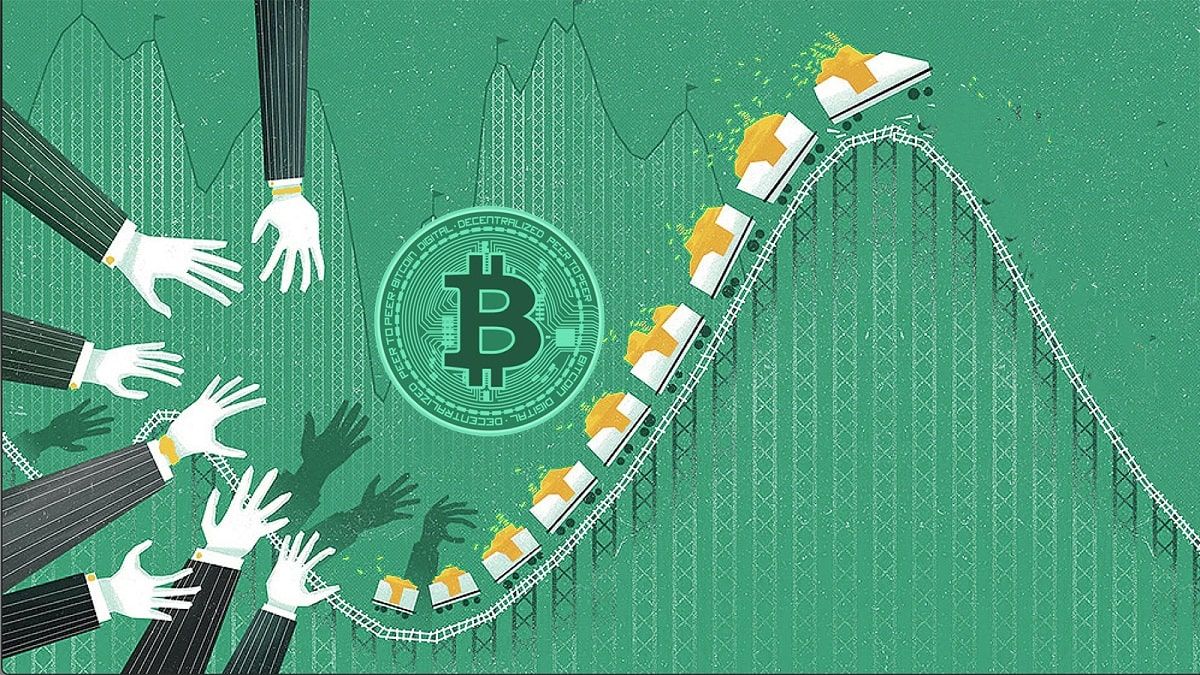Why is Bitcoin rallying?

Bitcoin has been on a rally like no other. So we thought we could look at the crypto asset once again and see what's really happening this time around. But like every other story, we need an introduction before we start moving along. So here goes...
The Story
Bitcoin isn’t like your regular currency. It’s a digital currency that runs on a blockchain.
1. Nobody controls the currency (no central bank that prints the notes)
2. Nobody decides who gets to transact with the currency (theoretically available to everyone irrespective of their nationality)
3. It provides an unalterable record of all transactions ever committed on the network (nobody can sneak into the network and alter records)
4. And these transactions are anonymous
So clearly there are material benefits in using Bitcoin. But it also comes with a few caveats. For starters, the value of Bitcoin is still susceptible to wild swings and most people believe that this will likely continue for the foreseeable future. Meaning, using it as an actual currency to transact might not be the most prudent thing to do. More importantly, not everybody is convinced Bitcoin is the future. They don’t think it merits any kind of adulation and are confident that it’s all a bubble.
But irrespective of your personal opinions, know this much — Bitcoin has been on a rally like no other. Just a few months back it was hovering at ~$10,000. But by January 1st 2021, it had peaked at ~$32,000. That is quite incredible. And this isn’t the first time it’s happening either. Remember December 2017 — When Bitcoin truly broke into the scene? That was when you couldn’t go a day without some random bloke talking to you about Bitcoin. News media was raving about Bitcoin millionaires. Office boys were discussing cryptos in dining halls. Hell, even that uncle selling LIC policies began taking a keen interest in these things. And then came the big crash. Within just one year it’s price dropped from ~$20,000 to roughly $3,000. It was a massacre. So there’s been some speculation that the new rally will end in catastrophe just like the crash we had a few years back.
However, proponents of Bitcoin argue otherwise. They believe this time it’s different. Last time regular retail investors propped up the price of Bitcoin by hoping to make some extra money on the side. They weren’t in it for the long run and were primarily making a bet because of FOMO — the fear of missing out. But this time, the rally seems to be driven (at least at some level) by participation from institutional investors — supposedly the more sophisticated kind.
As one article notes —
A survey by Fidelity of 800 large institutional investors in the US and Europe found that more than a quarter of them owned Bitcoin. Fidelity, which manages $3.3 trillion in assets, said in August it was launching its first Bitcoin fund.
By October there was even more evidence of institutional endorsement. PayPal announced that it would allow customers in the US to buy and sell Bitcoin on its platform and let them purchase items using cryptocurrencies. Soon the price of Bitcoin rallied even further.
But the principal dissidents of Bitcoin note that neither reason is cause to celebrate. They contest that institutional investors are equally susceptible, if not more likely to follow the herd. As one article on Finception notes —
A trait that humans have adopted since time immemorial is the ability to seek out information that aids their survival. These could be social cues that help you fit in or behavioural traits that help you adapt to ambiguous situations. It’s an evolutionary mechanism that prods us to “follow the herd”, lest we stand out. However, when you carry this sentiment over to financial markets, the outcome can prove particularly disastrous especially when large fund houses are also in on the herd.
In a 2005 paper titled “Thy Neighbour’s portfolio,” researchers concluded that a mutual fund manager is more likely to buy (or sell) a particular stock in any quarter if other managers in the same city are buying (or selling) that same stock. This was an attempt to study how investors spread information and ideas about stocks to one another directly, through word‐of‐mouth communication. When information spreads quick enough the surge in buying activity will self reinforce and propel the markets to react even faster setting off a dangerous chain reaction. When the collective conscience of the market finally realises that prices have reached unsustainable levels the sentiment reverses. Such booms and busts are characteristic of all financial markets, regardless of size, location, or even the era in which they exist.
So despite all the optimism surrounding Bitcoin, perhaps it’s prudent to exercise restraint, especially if you are planning to invest a large part of your savings in crypto assets. On the flip side, it no longer seems viable to dismiss the idea of Bitcoin as a scam either. There’s definitely more to this ethereal asset than what meets the eye. So maybe the only question now is — What is it really worth?
Let us know your thoughts on Twitter.
Until then…
